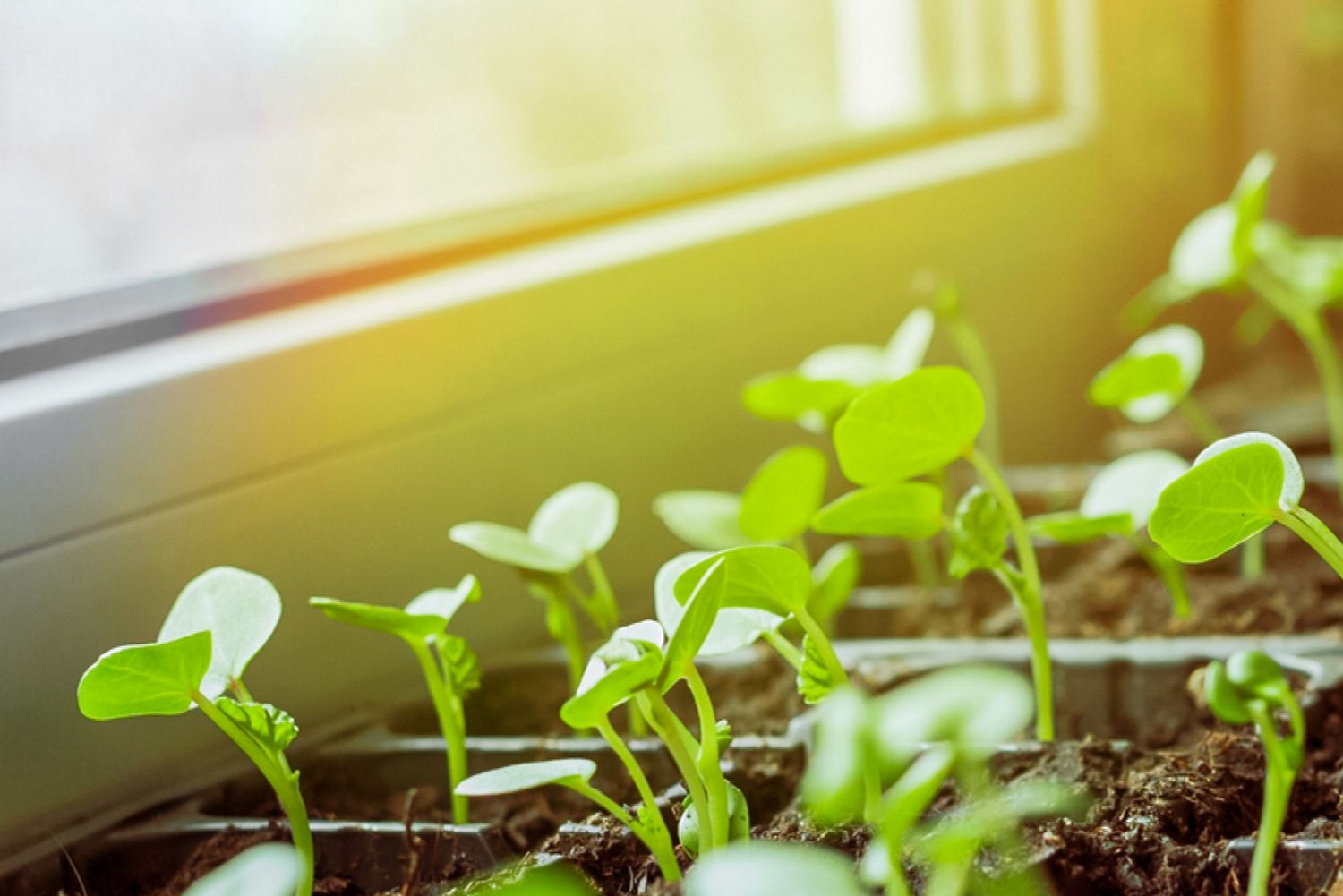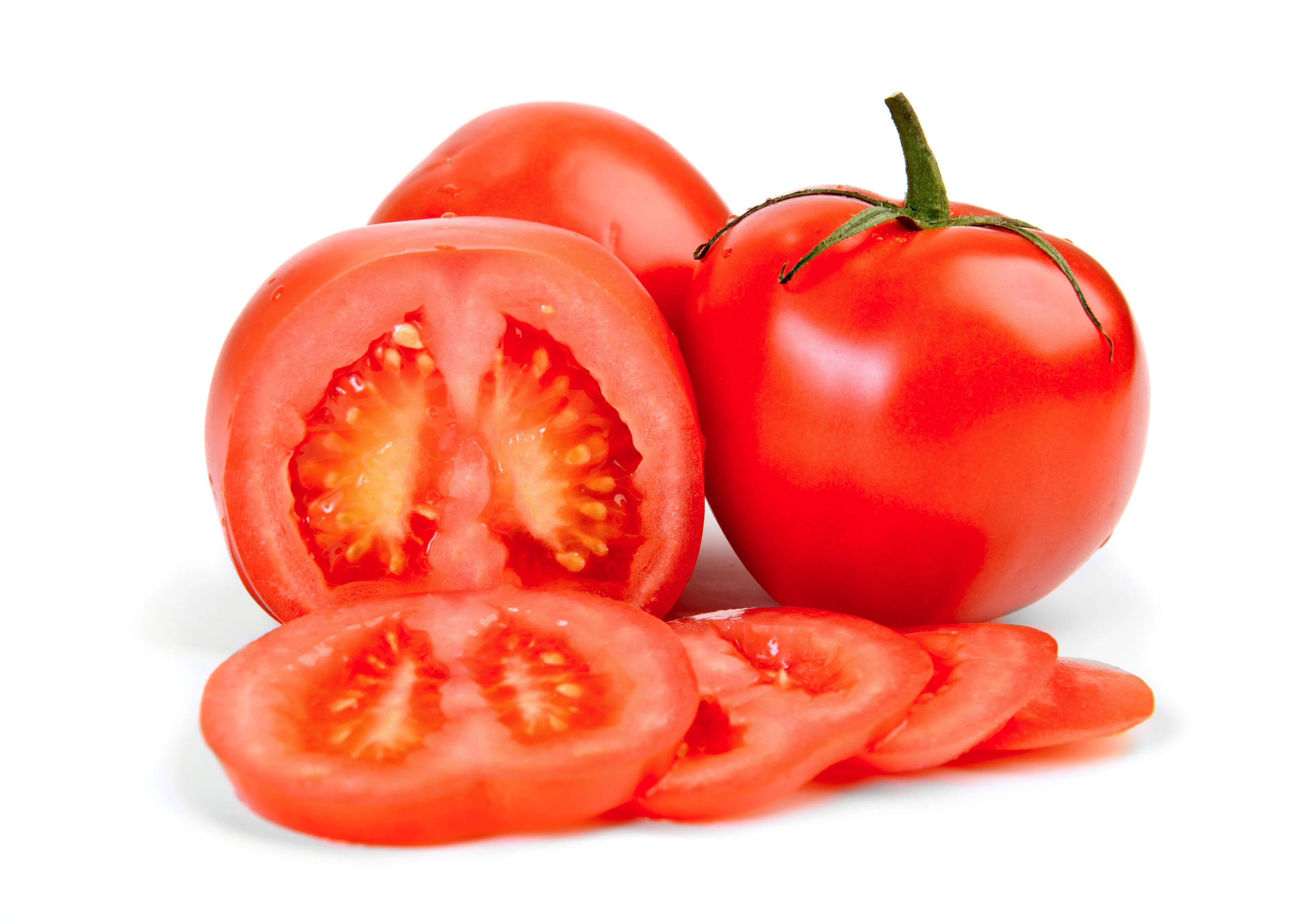Home>Gardening Techniques>When Should You Put Down Fertilizer


Gardening Techniques
When Should You Put Down Fertilizer
Modified: February 10, 2024
Discover the best times for applying fertilizer to your plants and maximize their growth with expert tips on plant care.
(Many of the links in this article redirect to a specific reviewed product. Your purchase of these products through affiliate links helps to generate commission for Chicagolandgardening.com, at no extra cost. Learn more)
Table of Contents
Introduction
Welcome to the world of plant care! Whether you are an experienced gardener or new to the green thumb scene, understanding the importance of fertilizer and knowing when to apply it can make a significant difference in the health and vitality of your plants. Fertilizers are essential nutrients that provide plants with the essential elements they need to grow and thrive.
In this comprehensive guide, we will delve into the world of fertilizer and explore the optimal timing for its application. Timing is critical when it comes to fertilizing your plants. Applying fertilizer at the right time ensures that your plants receive the nutrients they need, when they need them the most. It can help promote vigorous growth, improve flowering and fruiting, and enhance overall plant health.
By gaining a deeper understanding of the role of fertilizer, assessing the fertility needs of your soil, considering plant nutrient requirements, and evaluating environmental factors, you will be better equipped to determine the ideal timing for fertilizer applications. Additionally, we will discuss the importance of choosing the right type of fertilizer for your specific plants and provide guidelines for evaluating plant health and growth progress.
So, if you’re ready to learn how to optimize your plant care routine and yield bountiful harvests or vibrant blooms, let’s dive into the world of fertilizers and discover when and how to put them down for maximum effectiveness.
Understanding the Role of Fertilizer
Fertilizer plays a vital role in plant growth and development. It provides essential nutrients that may be lacking in the soil, helping plants to reach their full potential. These nutrients include macronutrients like nitrogen (N), phosphorus (P), and potassium (K), as well as micronutrients like iron (Fe), zinc (Zn), and manganese (Mn).
Nitrogen is crucial for leafy growth, phosphorus promotes root development and flower formation, while potassium aids in overall plant health, including disease resistance. Additionally, micronutrients support specific plant functions, such as photosynthesis, enzyme activity, and hormone production.
By supplying plants with the necessary nutrients, fertilizers ensure balanced growth, increased yield, and improved plant health. However, it is important to note that excessive fertilizer application can be detrimental. Over-fertilization can lead to nutrient imbalances, root burn, and environmental pollution. Therefore, understanding the specific needs of your plants and soil is essential.
To determine if your soil lacks essential nutrients, you can conduct a soil test. This analysis will provide insight into the nutrient composition of your soil and help you identify any deficiencies or imbalances. Soil pH is also a critical factor to consider, as it affects nutrient availability. Most plants prefer a slightly acidic to neutral soil pH, typically around 6.0 to 7.0.
Furthermore, it is important to note that different plants have varying nutrient requirements. Some plants, such as leafy greens like lettuce and spinach, have high nitrogen demands. On the other hand, flowering plants, like roses or sunflowers, may require more phosphorus to support their blooming process. Understanding the specific nutrient requirements of your plants will help you select the most appropriate fertilizer formulation.
Overall, fertilizer acts as a supplement to provide essential nutrients that support healthy plant growth. By understanding the role of fertilizer and the needs of your plants and soil, you can make informed decisions about when and how to apply fertilizer to optimize your plant’s health and productivity.
Determining Soil Fertility Needs
The first step in determining the fertility needs of your soil is to conduct a soil test. This test provides valuable information about the nutrient levels and pH of your soil, allowing you to make informed decisions about fertilizer applications.
A soil test typically analyzes the levels of essential nutrients, including nitrogen (N), phosphorus (P), potassium (K), and micronutrients like iron (Fe), zinc (Zn), and manganese (Mn). The results of the test will indicate whether your soil is deficient or excessive in these nutrients.
Interpreting the results of a soil test can be complex, so it is often helpful to consult with a professional or local extension service for guidance. They can provide recommendations on the types and amounts of fertilizers needed to address any deficiencies in your soil.
In addition to nutrient analysis, soil tests also measure the pH level of your soil. Soil pH affects nutrient availability to plants. For example, if the soil is too acidic or alkaline, certain nutrients may become unavailable to plants, even if they are present in the soil. Adjusting the pH to the appropriate range for your plants’ needs can greatly enhance nutrient uptake and overall plant health.
Understanding the soil texture is also crucial in determining fertility needs. Soil texture refers to the relative proportions of sand, silt, and clay particles in the soil. Sandy soils, for example, tend to have lower nutrient-holding capacity compared to clay soils. This means that sandy soils may require more frequent fertilizer applications to replenish nutrients, while clay soils may require more careful monitoring to avoid nutrient runoff.
By conducting a soil test and considering soil pH, texture, and nutrient levels, you can determine the fertility needs of your soil. This information will guide you in selecting the appropriate fertilizers and applying them in the right amounts to optimize plant growth and health.
Assessing Plant Nutrient Requirements
In addition to understanding the fertility needs of your soil, it is crucial to assess the specific nutrient requirements of your plants. Different plant species have varying nutrient needs, and providing them with the right balance of nutrients is essential for optimal growth and productivity.
One way to determine the nutrient requirements of your plants is to reference plant-specific guides or consult with local experts. These resources can provide valuable insights into the specific nutrient needs of different plant varieties, including their optimal ranges for nitrogen (N), phosphorus (P), potassium (K), and micronutrients.
Observing the overall health and growth of your plants can also indicate nutrient deficiencies or imbalances. For example, if your plants have stunted growth, pale leaves, or poor flowering, it may be a sign of nutrient deficiency. Leaf discoloration or abnormal leaf patterns can also indicate specific nutrient deficiencies, such as yellowing leaves in nitrogen-deficient plants or purple-tinged leaves in phosphorus-deficient plants.
However, it is important to note that visual symptoms alone may not provide a definitive diagnosis of nutrient deficiencies. Some symptoms may be similar across different nutrient deficiencies or can be caused by other factors, such as pests or diseases. Hence, it is wise to combine visual observations with soil tests to get a comprehensive understanding of your plants’ nutrient requirements.
Timing is another crucial factor to consider when assessing nutrient requirements. Different stages of plant growth have varying nutrient demands. For example, during the early growth stage, plants focus on developing strong root systems and may require higher levels of phosphorus. During the flowering or fruiting stage, plants may require additional potassium to support the development of buds, flowers, and fruits.
By assessing plant nutrient requirements, you can fine-tune your fertilizer application to meet the specific needs of your plants. This targeted approach optimizes nutrient uptake, ensuring healthy and vigorous growth, vibrant blooms, and bountiful harvests.
Considering Environmental Factors
When determining the timing of fertilizer applications, it is essential to consider various environmental factors that can influence nutrient availability and plant uptake. These factors play a significant role in determining when plants will benefit the most from fertilizer treatments.
One crucial environmental factor to consider is temperature. Plants have different nutrient uptake rates depending on temperature conditions. In general, warmer temperatures increase microbial activity in the soil, which can enhance nutrient availability. Therefore, during the growing season when temperatures are higher, plants may have higher nutrient demands.
The moisture level of the soil is another critical environmental factor. Adequate moisture is necessary for nutrient absorption by plant roots. If soil moisture is too low, nutrients can become less available to plants, even if they are present in the soil. On the flip side, excessive moisture can lead to nutrient leaching or waterlogging, which can hinder nutrient uptake. Therefore, it is important to time fertilizer applications when soil moisture levels are appropriate for optimal plant nutrient uptake.
Additionally, considering the stage of plant growth is crucial when applying fertilizer. Different plants have distinct growth patterns and nutrient demands during various stages of their life cycle. For instance, during the vegetative stage, plants focus primarily on leaf development and require higher amounts of nitrogen. Meanwhile, during the flowering or fruiting stage, plants require increased phosphorus and potassium to support reproductive growth. Adjusting fertilizer applications to align with these growth stages ensures that plants receive the right nutrients at the right time.
It is also important to take into account local climate conditions, such as rainy seasons or drought periods. Rainfall can leach nutrients from the soil, requiring more frequent fertilizer applications to replenish lost nutrients. Conversely, in areas experiencing drought, it may be necessary to reduce fertilizer applications to prevent nutrient burn on plants with limited water uptake capabilities.
By considering these environmental factors, you can determine the optimal timing for fertilizer applications. This approach ensures that plants have the best chance of efficiently utilizing the applied nutrients, leading to improved growth, vigor, and overall plant health.
Choosing the Right Type of Fertilizer
Choosing the right type of fertilizer is crucial to ensure that your plants receive the specific nutrients they need for optimal growth. There are various types of fertilizers available, each designed to meet specific nutrient requirements and address different soil conditions.
One common type of fertilizer is complete or balanced fertilizers, which contain a mixture of macronutrients and micronutrients. These fertilizers provide a well-rounded nutrient profile and are suitable for general plant maintenance. They are typically labeled with a series of three numbers, indicating the percentage of nitrogen (N), phosphorus (P), and potassium (K) they contain. For example, a fertilizer labeled as 10-10-10 contains 10% of each nutrient.
If your soil test indicates specific nutrient deficiencies, you may opt for specialty fertilizers that target those particular nutrients. For example, fertilizers with a high nitrogen content are suitable for promoting lush green foliage. On the other hand, phosphorus-rich fertilizers can enhance root development and flowering. Micronutrient fertilizers are also available for addressing specific micronutrient deficiencies.
Another consideration when choosing fertilizers is the source of nutrients. Fertilizers can be either organic or synthetic. Organic fertilizers are derived from natural sources such as animal manure, compost, or plant matter. They release nutrients slowly over time as they break down, providing a long-lasting source of nutrients. Organic fertilizers also improve soil structure and enhance microbial activity. Synthetic or chemical fertilizers, on the other hand, are manufactured and provide nutrients in readily available forms. They can be quickly absorbed by plants but may have a higher risk of leaching into the environment if not applied correctly.
Additionally, understanding the release characteristics of fertilizers is critical. Some fertilizers are fast-releasing and provide nutrients immediately, while others are slow-release or controlled-release, gradually releasing nutrients over an extended period. Slow-release fertilizers are beneficial for reducing nutrient leaching and providing a steady supply of nutrients. Controlled-release fertilizers release nutrients based on environmental conditions such as temperature or moisture levels.
Consider the specific needs of your plants, soil conditions, and personal preferences when choosing the right type of fertilizer. It is also important to read and follow the manufacturer’s instructions for the proper application rates and timings. Consulting with local experts, such as garden centers or extension services, can provide valuable guidance in selecting the most suitable fertilizer for your specific plants and growing conditions.
Timing Applications for Maximum Effectiveness
Timing fertilizer applications is crucial to ensure maximum effectiveness and to provide plants with the nutrients they need at the right time. Applying fertilizer at the wrong time can result in nutrient wastage, nutrient imbalances, or even harm to your plants.
One key factor to consider when timing fertilizer applications is the growth stage of the plants. Different plants have different nutritional needs at various stages of their life cycle. For example, during the initial growth stage, plants require higher levels of nitrogen to support leaf development. As plants transition into the flowering or fruiting stage, they require increased phosphorus and potassium to promote blooming and fruit production. Applying the appropriate nutrients at the right growth stage ensures that plants receive the necessary nutrients when they can best utilize them.
It is also important to consider the seasonal timing of fertilizer applications. In most cases, it is best to apply fertilizer when plants are actively growing. For annual plants, this is typically during the spring and summer months when temperatures are warmer, and daylight hours are longer. Perennial plants may also benefit from a second application of fertilizer in the early fall to promote healthy root growth and store nutrients for the winter months.
Another factor to consider is soil moisture. It is generally recommended to apply fertilizer when the soil is moist but not saturated. Moist soil helps ensure that nutrients can be taken up by plant roots. Dry soil may not provide adequate moisture for nutrient absorption, while waterlogged soil can lead to nutrient leaching or root damage. Therefore, it is important to time fertilizer applications when there is sufficient soil moisture for optimal nutrient uptake.
Environmental conditions, such as temperature and rainfall, should also be taken into account when timing fertilizer applications. Ideally, it is best to avoid applying fertilizer during periods of extreme heat or heavy rainfall. High temperatures can lead to nutrient volatilization or burn on plant foliage, while heavy rainfall can wash away applied nutrients before they can be absorbed by plants. Opting for a calm, mild weather period will help ensure that fertilizers are effectively utilized by plants.
Lastly, it is important to follow the recommended application rates and guidelines provided on the fertilizer packaging. Over-applying fertilizers can lead to nutrient imbalances, environmental pollution, or even harm to your plants. Additionally, it is essential to avoid applying fertilizers too close to the base of the plant stems, as this can cause root burn. Instead, spread the fertilizer evenly around the drip line of the plants, where the roots are most active.
By carefully considering the growth stage of the plants, seasonal timing, soil moisture, and environmental conditions, you can time fertilizer applications for maximum effectiveness. This will maximize the benefits of fertilizers, promote healthy plant growth, and optimize overall plant health and productivity.
Evaluating Plant Health and Growth Progress
Evaluating the health and growth progress of your plants is essential to gauge the effectiveness of your fertilizer applications and make necessary adjustments. Monitoring the overall well-being of your plants allows you to identify any nutrient deficiencies or other issues that may be hindering their growth.
One of the most common signs of healthy plant growth is vibrant foliage. Lush, green leaves indicate that plants are receiving the necessary nutrients for photosynthesis and growth. Conversely, pale or yellowing leaves may suggest nutrient deficiencies, such as nitrogen deficiency. By regularly inspecting the color and condition of your plants’ leaves, you can identify any nutrient imbalances and adjust your fertilization routine accordingly.
Assessing the development of flowers and fruits is also crucial, especially for flowering and fruiting plants. The number, size, and quality of blooms and fruits can indicate whether adequate nutrients are being provided. If plants are not producing flowers or fruits as expected, it might be an indication that additional fertilization is needed, particularly with phosphorus and potassium-rich fertilizers.
Monitoring plant growth is another important aspect of evaluating plant health. Healthy plants typically exhibit steady growth, producing new leaves or stems regularly. Stunted growth or lack of growth may signal nutrient deficiencies or other underlying issues. Ensure your plants are receiving the necessary nutrients and environmental conditions for optimal growth.
In addition to visual evaluation, you can also conduct periodic soil tests to assess nutrient levels. Soil tests can indicate whether the nutrient levels are within the desired range, allowing you to make informed decisions about adjusting fertilizer applications. Monitoring soil pH is also important, as nutrient availability is strongly influenced by soil pH. Adjusting pH levels, if necessary, can enhance nutrient uptake.
Pest and disease resistance can also be a sign of healthy and well-nourished plants. Strong, healthy plants are more resilient and less susceptible to pests and diseases. If plants are facing repeated pest or disease problems, it may be an indication of underlying nutrient deficiencies or imbalances that need to be addressed through appropriate fertilization.
By regularly evaluating the health and growth progress of your plants, you can detect any potential nutrient deficiencies or imbalances. This allows you to make timely adjustments to your fertilization routine and ensure that your plants receive the nutrients they need for optimal growth, vitality, and overall plant health.
Conclusion
Fertilizing your plants at the right time and with the right type of fertilizer is crucial to their overall health and productivity. By understanding the role of fertilizer, determining soil fertility needs, assessing plant nutrient requirements, considering environmental factors, choosing the right type of fertilizer, timing applications for maximum effectiveness, and evaluating plant health and growth progress, you can optimize your plant care routine and ensure successful growth.
Remember, fertilizer is not a one-size-fits-all solution. Different plants have different nutritional needs, and soil conditions can vary greatly. Conducting a soil test and monitoring plant health can provide valuable insights into nutrient deficiencies or imbalances. By selecting fertilizers that address specific nutrient requirements and timing applications during the appropriate growth stages, you can promote healthy root development, vigorous foliage, abundant blooms, and bountiful harvests.
Consider the environmental factors that can influence nutrient availability, such as temperature, soil moisture, and local climate conditions. These factors should be taken into account to ensure that plants can effectively absorb and utilize the applied nutrients. By timing fertilizer applications accordingly, you can prevent nutrient wastage, promote efficient nutrient uptake, and minimize the risk of nutrient pollution or burn on plant foliage.
Regularly evaluate the health and growth progress of your plants to ensure that they are thriving. Monitor leaf color, growth rates, and the development of flowers or fruits. Conduct soil tests periodically to assess nutrient levels and pH. By making necessary adjustments based on these evaluations, you can address any nutrient deficiencies or imbalances and support the long-term health and vitality of your plants.
In conclusion, by understanding the importance of fertilizer and implementing effective timing strategies, you can enhance the growth, health, and overall well-being of your plants. With proper fertilizer applications, your plants will flourish, rewarding you with beautiful blooms, delicious fruits, and a thriving garden.









